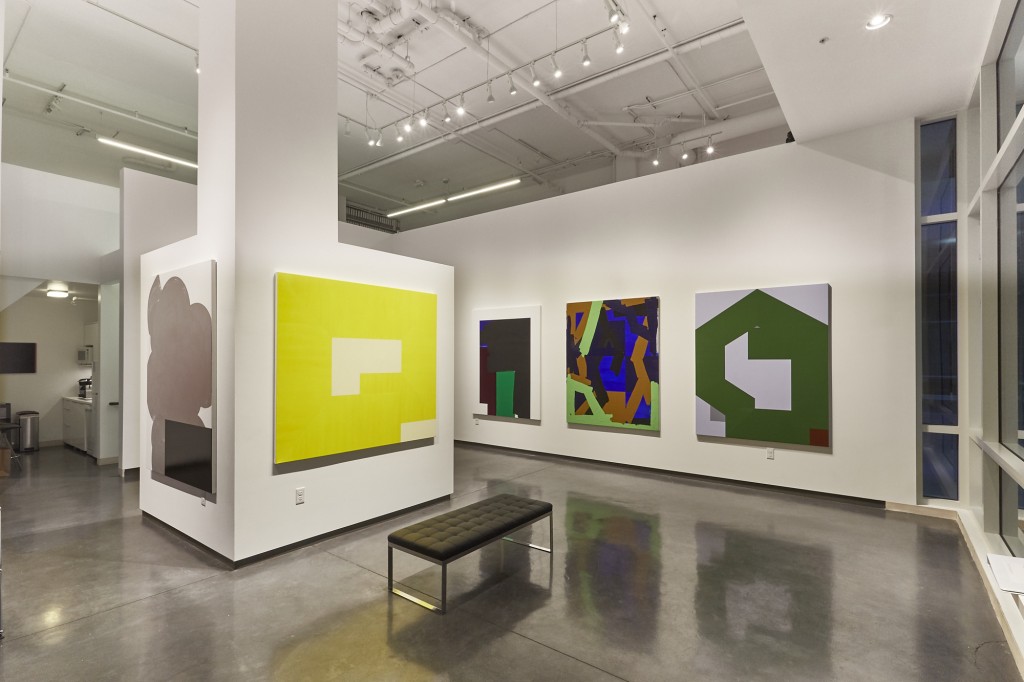Chad Hasegawa exhibited a new body of work this month at San Francisco’s Andrea Schwartz Gallery. The exhibition titled “Wall Colorings” consisted of large works on canvas furthering the artists’ experimentation into abstract geometric work. The work focuses on the artists Wall colorings series where Chad has progressed into pure abstract forms, a transition from his earlier work involving representational imagery. Over the past couple of years the artist has evolved this series of work to pure brushstrokes, the application of paint, and minimal compositions. “Wall Colorings” is a culmination of the artists past and present, his approach influenced by his earlier days painting walls with Latex Paints has been replaced with heavy acrylic on large format canvases. The show is impressive with a full range of the artists’ oeuvre; geometric abstracts merge into gestural hybrid geometric paintings. Chad is able to move from one perspective to another effortlessly without complicating or oversaturating the overall flow of the show. Minimal yet powerful is what comes to mind after viewing this exhibition. If you are in San Francisco make sure to stop by and see this exhibition in person before it ends this weekend.
GF
Andrea Schwartz Gallery is pleased to announce the first solo exibition featuring new works by Chad Hasegawa.
“My style and technique is developed from how I would actually paint a wall. The paints I use, the layering process, the learning process… While painting walls you deal with elements of weather: rain, wind, dust, and all angles of direct sunlight. All these elements will influence how I paint my canvas… My approach to painting is not understanding that I’m painting on canvas; I paint on canvas with the understanding of painting on walls.” – Chad Hasegawa
In Chad Hasegawa’s current body of work, he molds his resourceful street art background with his fine art influences. Hasegawa’s nonobjective paintings rely on forms and colors, as they relate to one another and create a single shape. Hasegawa takes his concerns for painting something that lasts in the outdoors, and applies the same techniques when approaching a canvas. He uses latex paint, and oversized brush strokes to ensure these paintings, like his murals, will surpass the test of time.
Hasegawa’s biggest influence lays in traditional Hawaiian quilts which culturally are viewed more as paintings or unique works of art to be passed down from generation to generation. The colors of these tapestries usually reflect the royalty colors from the great kings and queens of ancient Hawaii. The palettes are very strong and bold choices to be put one next to the other. The designs are graphic and balanced in composition. The colors in Hasegawa’s paintings give a sense of opposites attracting.












